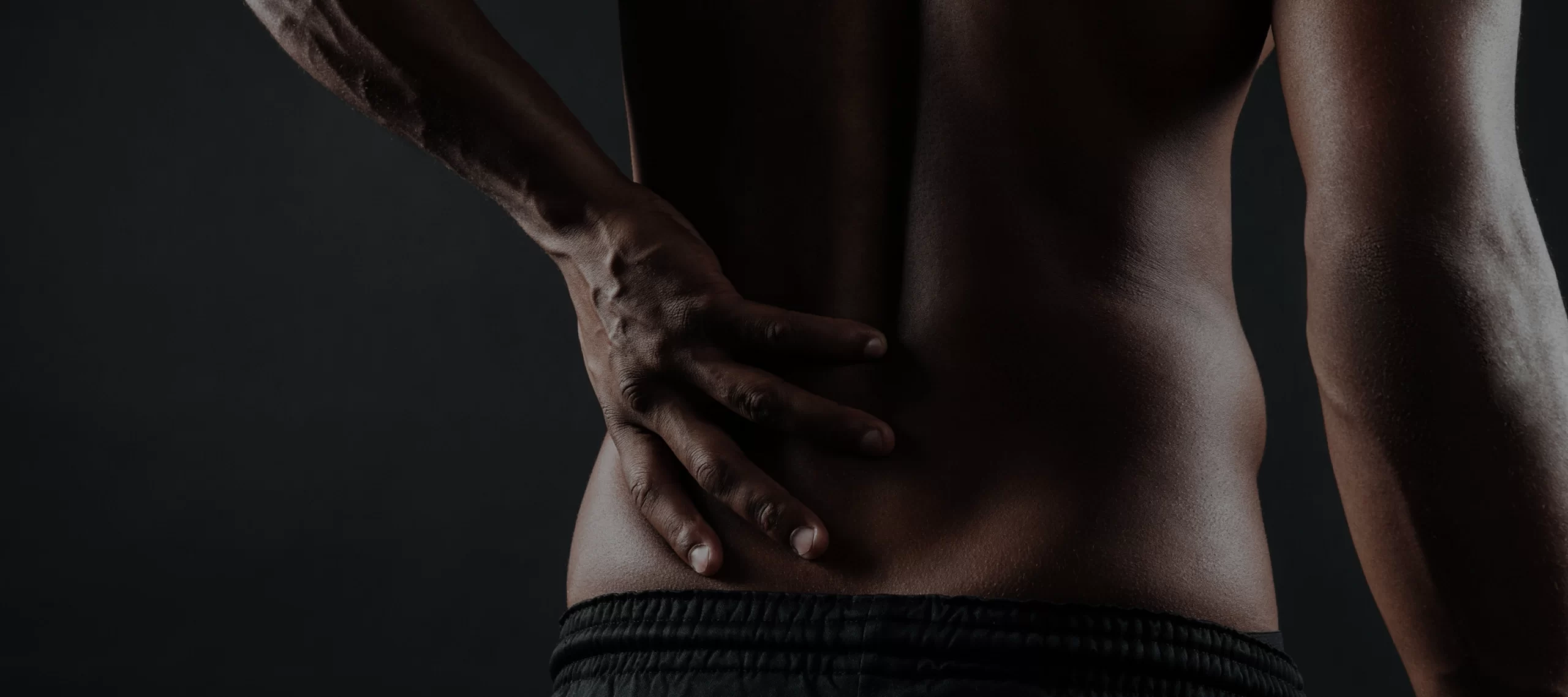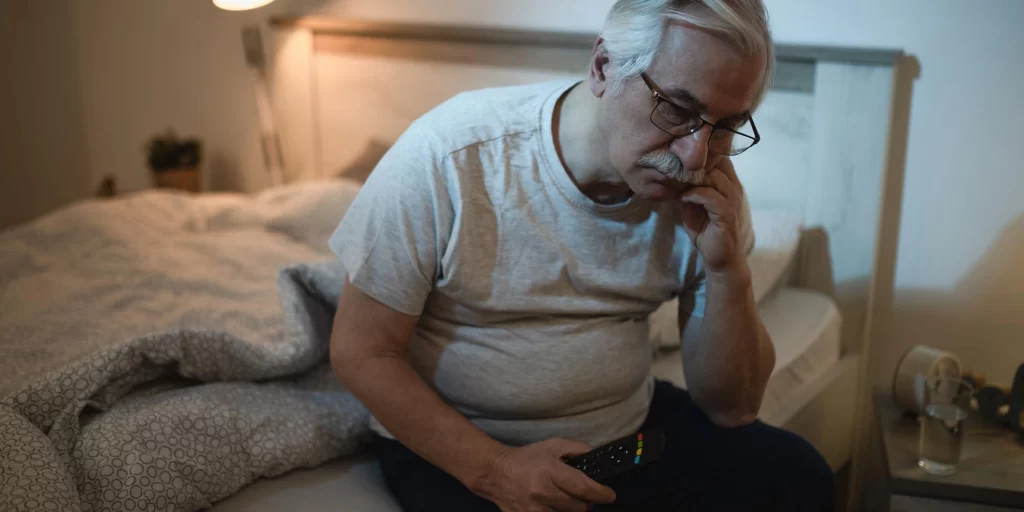
What is Back Pain?
Back pain is a common condition that can affect people of all ages, genders, and activity levels. It is one of the leading causes of disability worldwide. At Bux Pain Management, we understand the impact that back pain can have on your life. That’s why we offer a comprehensive range of treatment options to help you find relief and get back to your normal activities.
About Chronic Back Pain
Chronic back pain, lasting more than 12 weeks, can significantly impede daily activities, job performance, and interpersonal relationships, potentially leading to mental health challenges such as depression and anxiety.Symptoms
The most common symptom of chronic back pain is pain in the lower back. However, the pain can also occur in the upper back, neck, or shoulders. Chronic back pain can be dull, achy, or sharp and stabbing. It may be constant or come and go.
Other symptoms of chronic back pain may include:
- Muscle spasms
- Stiffness
- Weakness
- Numbness or tingling
- Difficulty walking or standing
- Loss of range of motion

There are a number of different medical conditions that may lead to a person developing chronic back pain, including:
Degenerative Disc Disease
As part of the natural aging process, leading to spinal disc degeneration, causing pain.
Spinal Stenosis
A narrowing of the spinal canal, exerting pressure on nerves.
Arthritis
Joint inflammation including those in the spine.
Herniated Discs
Protrusion of spinal discs, irritating adjacent nerves.
Failed Back Surgery Syndrome
Continued pain following back surgeries, sometimes due to residual or recurrent spinal disc herniation, persistent post-operative pressure on a spinal nerve, affected joint mobility, or scar tissue
Fibromyalgia
Characterized by widespread musculoskeletal pain.
Myofascial Pain Syndrome
Chronic muscle pain in the body’s soft tissues.
Infections
Spinal or other infections leading to back pain.
Tumors
Tumors that may compress spinal nerves or surrounding areas.
Additional factors that could exacerbate or trigger back pain, include:
Muscle and Ligament Strains
Often resulting from heavy lifting or sudden twisting.
Spondylosis
Age-related degeneration of spinal discs and joints.
Vertebral Compression Fractures
Often arising from osteoporosis.
Poor Posture
continuous poor posture placing undue strain on the spine.
Obesity
Extra weight that places additional strain on back muscles and discs.
Smoking
Leading to reduced blood flow to the spine, potentially causing disc degeneration.
Underlying Medical Conditions
Conditions like cancer or kidney disease can induce back pain.
Pregnancy
Leading to back strain.
Identifying the root cause of your back pain will assist in crafting a tailored treatment plan and effective management strategy.

Causes of Back Pain
There are a number of factors that can increase your risk of developing chronic back pain, including:
Age
As we age, people might experience a natural degeneration of the spine. The discs between the vertebrae lose their flexibility and elasticity, leading to discomfort. The onset of conditions such as osteoarthritis and spinal stenosis, which are more common in older adults, can also contribute to chronic back pain.
Occupation
Occupational hazards play a significant role in the development of chronic back pain. Jobs that require heavy lifting, bending, and twisting, or standing/sitting for prolonged periods can exert excess strain on the back. Similarly, a lack of movement can also contribute to back discomfort over time.
Lifestyle:
Certain lifestyle choices can significantly impact the likelihood of experiencing chronic back pain. These include:
- Physical Activity: A lack of exercise can lead to weak back and core muscles, which may in turn affect the spine.
- Obesity: Excess weight can strain back muscles and spinal structures.
- Smoking: Smoking can impair blood flow, leading to oxygen and nutrient deprivation in spinal tissues.
- Poor Posture: Consistently poor posture can place undue pressure on the back which, over time, can lead to chronic pain.
Medical history
Individuals with a medical history of spine or back problems are at a higher risk of chronic back pain. Additionally, other medical conditions such as arthritis and kidney disease can contribute to or exacerbate back pain. Some individuals might be genetically predisposed to certain conditions that induce chronic back pain.

Risk of Developing Back Pain
The risk of developing back pain is complex, often encompassing a blend of an individual’s physical condition and external factors:
- INDIVIDUAL FACTORS
Age
The onset of back pain commonly occurs between the ages of 30 and 50, and may become more prevalent with aging.
Fitness Level
Individuals with a lower fitness level may experience back pain more commonly, as well-conditioned muscles provide better support to the spine.
Body Weight
While body weight alone doesn’t necessarily cause back pain, being overweight can heighten the risk of flare-ups, especially if a back condition already exists.
- OCCUPATIONAL FACTORS
Physical Demands
Occupations with higher physical demands such as lifting, bending, or prolonged standing or sitting may predispose individuals to back pain.
- INDIVIDUAL FACTORS
Physical Activity
Engaging in activities that may strain the back or lead to injuries could increase the risk of back pain. A lifestyle that promotes regular exercise and stretching may help in preventing back pain.
Posture
Maintaining a good posture is crucial to prevent undue stress on the back which could lead to chronic back pain over time.
- HEALTH CONDITIONS
Existing Back Conditions
Individuals with pre-existing back conditions are at a higher risk of experiencing chronic back pain.
Other Medical Conditions
Certain medical conditions can indirectly contribute to back pain, like arthritis or other inflammatory conditions.
- PREVENTIVE MEASURES
Proactive Management
Steps that may help lower the risk of developing back pain include maintaining a healthy weight, ensuring good posture, and adopting a physically active lifestyle.
Understanding and addressing these factors can help to minimize the risk of developing back pain, promoting a healthier back and overall wellbeing.

When to See a Doctor?
You should see a specialist for back pain if you have any of the following:
- Severe pain that does not improve with over-the-counter pain relievers.
- Pain that lasts for more than two weeks.
- Pain that is accompanied by other symptoms, such as fever, weakness, or numbness.
- Pain that makes it difficult to walk, stand, or sleep.
- Pain that is getting worse over time.
Here are some specific situations where you should see a doctor for back pain:
- If you have back pain that spreads down your leg (sciatica).
- If you have back pain that is accompanied by loss of bladder or bowel control.
- If you have back pain that is accompanied by fever.
- If you have back pain after a fall or other injury.
- If you have back pain and you have any underlying medical conditions such as arthritis or cancer.
If you are unsure whether or not you should see a for your back pain, it is always best to err on the side of caution and make an appointment.
Here are some additional tips for deciding when to see a doctor for back pain:
- If your back pain is interfering with your daily activities, such as work, school, or hobbies.
- If your back pain is making it difficult to sleep.
- If your back pain is causing you significant distress or anxiety.
If you have any questions or concerns about your back pain, please talk to your doctor.

Treatments For Back Pain
At Bux Pain Management, we offer a variety of minimally invasive treatment options for back pain, including:
Anesthetic injections
These injections can help alleviate pain by numbing the affected area.
Radio frequency ablation (RFA)
RFA uses heat to mitigate or halt the transmission of pain.
Spinal decompression
Spinal decompression is a technique that gently stretches the spine to provide relief from back pain by taking pressure off the spinal discs and nerves.
Spinal cord stimulation (SCS)
SCS employs electrical impulses to alleviate chronic pain.
Intrathecal pain pump
An intrathecal pain pump delivers pain medication directly to the space around the spinal cord.

